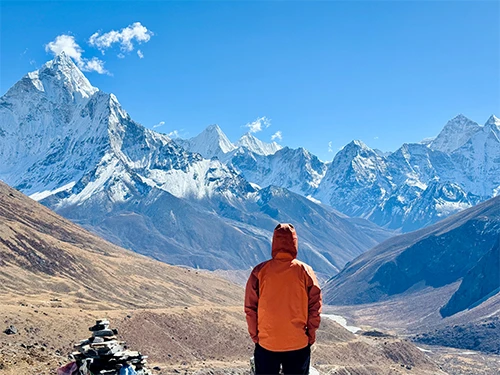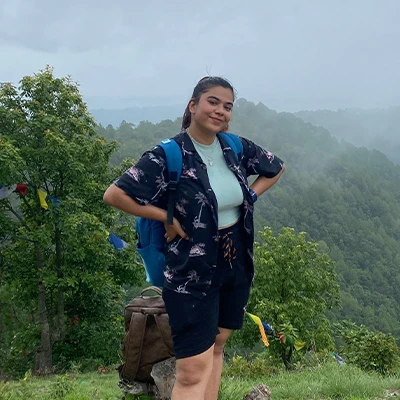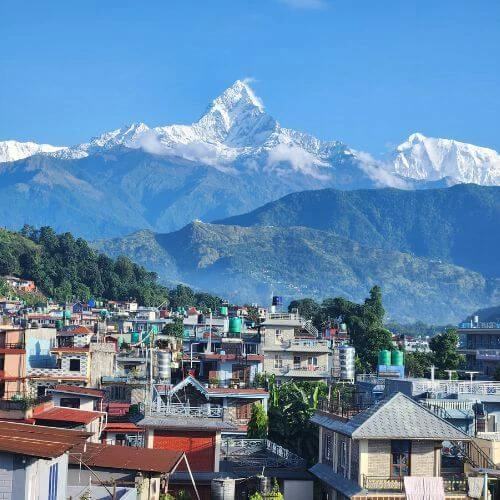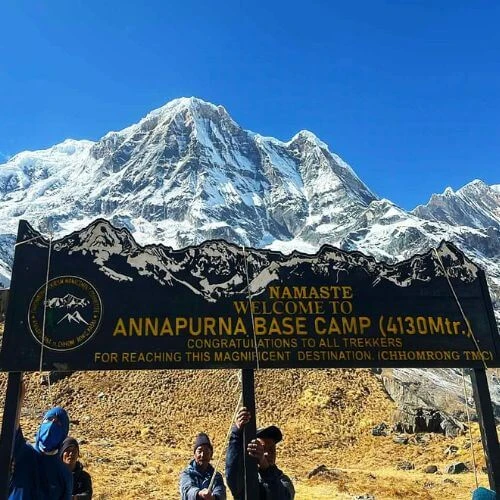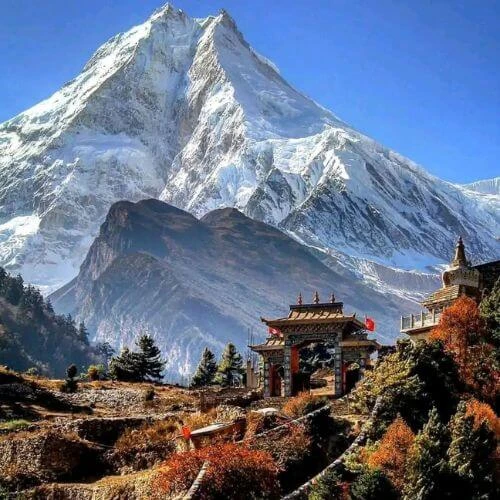Many people dream of climbing up to the Everest Base Camp, and packing the right gear and supplies will help you make that dream a reality. While the journey is unforgettable, it is also demanding. So packing the wrong gear can really derail your adventure faster than you think.
That's where we come in with this Everest Base Camp packing list that will help decide what exactly to bring to your EBC trek. From clothes, footwear, to travel documents and tech, our experts at Abound Holidays will guide and help you with all the necessary things you need to be fully prepared for your journey.
What are the Essential Clothing Items for the Everest Base Camp Packing List?
The main aspect of a nice and comfortable trek is proper clothing. Your clothing system can make or break your trek at any time if you didn’t layer up properly. Temperatures around the Himalayan region fluctuate a lot and you maybe be feeling warm during the day but it will get cold and windy real fast at night. So layering for both condition is important.
Layering Strategy
- Base Layer: Moisture-absorbing thermal tops and bottoms
- Mid Layer: Fleece jacket or synthetic insulated layer
- Outer Layer: Waterproof and windproof shell jacket and pants
Go with fabrics that are breathable, quick-dry, and odor-resistant materials like wool or polyester blends, and avoid cotton as it traps moisture and doesn’t dry easily.
Seasonal Consideration
- Spring (Mar–May): Milder, but occasional snow at higher altitudes
- Summer/Monsoon (Jun–Aug): Warm temperatures with heavy rainfall and muddy trails
- Autumn (Sep–Nov): Clear skies, colder mornings and nights
- Winter (Dec–Feb): Harsh cold, frequent snowfall, and fewer trekkers on the trail
Make sure you check the seasonal conditions of the trek before you pack your clothing as it varies for each season. For trekking best seasons/time, visit "Best Time for Everest Base Camp Trek".
Recommendation Read:
What to Pack for Everest Base Camp Trek: Complete Packing Guide
What Footwear Should You Bring for the EBC Trek?
You will be travelling over 100km if you are on the EBC Trek route, so comfort and protection are pretty much non-negotiable at that point. You have to be prepared for different weather conditions, and extra for teahouses as well.
Trekking Shoes
Hiking Boots: High-ankle, waterproof, and broken-in (softened through many journeys)
Trail Runners: Optional, for experienced trekkers or lower altitudes only
Socks
3–5 pairs of merino wool socks
1–2 liner socks to prevent blisters
Camp Shoes
Lightweight sandals
slip-ons for teahouse evenings
Learn about Difficulty of Everest Base Camp Trek
What Accessories and Gear Are Necessary for the EBC Packing List?
Accessories like duffel bag and sleeping bag are something you cant forget on treks like these, as they are what enables you to continue your journey through this vast landscape. Most of these things help with comfort, efficiency, and safety on the trail.
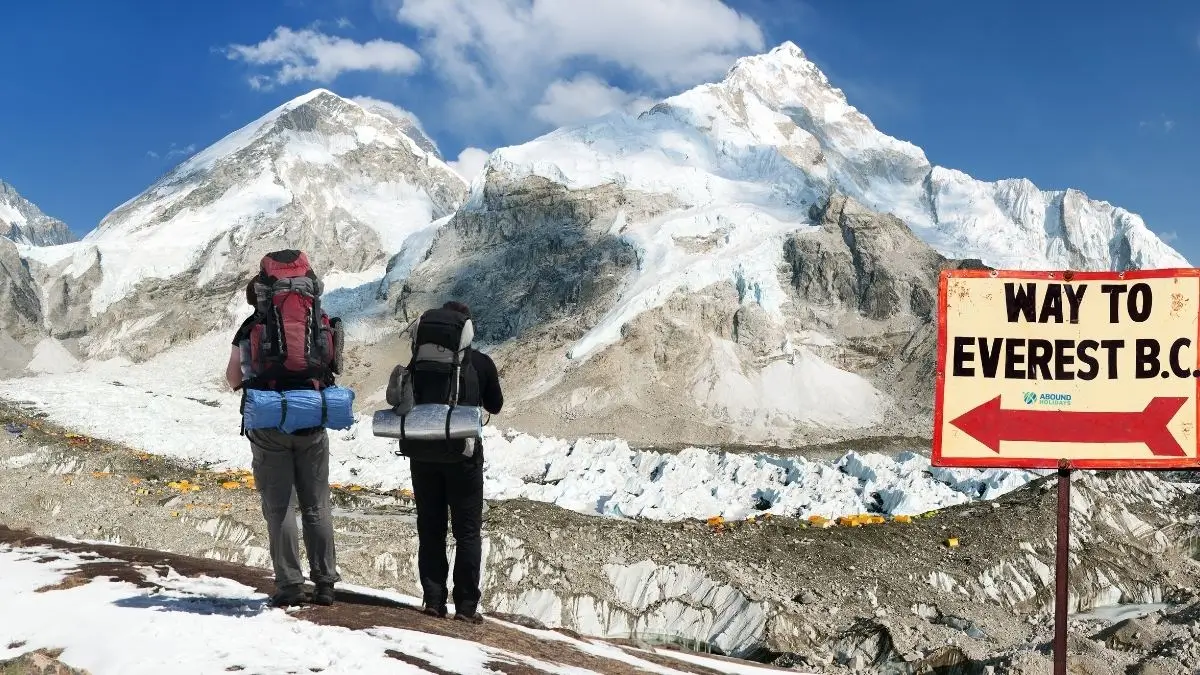
Luggage
Duffel Bag (60–80L): contains your gear and stuff usually carried by porters
Daypack (25–35L): For your documents, water, snacks, layers, and valuables
Sleeping Gear
Sleeping Bag: Rated to -10°C or lower (4-season ready preferred)
Sleeping liner for added warmth and hygiene
Trekking Essentials
Trekking poles (collapsible)
Warm gloves (inner + outer), beanie, sun hat, neck buff
Sunglasses (UV400 protection)
1–2 water bottles for hydration
Which Electronics and Gadgets Should You Carry?
While the EBC trek is up in the mountains in a remote place, you should carry few pieces of electronic for staying safe and capturing moments.
Must-Have
- A camera or smartphone with spare batteries
- Power bank (20,000 mAh+)
- Charging cables and adapters (Nepal uses Type C/D plugs)
- Solar charger (optional but useful)
- Headlamp or flashlight with extra batteries
What Health and Safety Items Are Important?
In the trek, you will be gaining altitude as you climb up, and the weather gets harsher, as well as your body starts to feel the lack of oxygen. More often than most, you need to make sure you are taking care of your body and looking for signs of altitude sickness when climbing high.
So what should you prepare for these moments?
Medical Essentials
- Personal first-aid kit (band-aids, antiseptic, blister pads)
- Altitude sickness medication (e.g., Diamox/Acetazolamide)
- Painkillers, rehydration salts
- Prescription meds
Other Health Items
- Sunscreen (SPF 50+), lip balm with SPF
- Insect repellent (low risk, but worth carrying)
- Water purification: tablets or a filter bottle
What Travel Documents and Miscellaneous Items Should You Have?
When trekking, there are some necessary documents that you need; this is true for every trek in Nepal these days. Some of the important permits and paperwork you need for the EBC trek are as follows:
Must-Carry Documents
- TIMS Card (Trekkers’ Information Management System)
- Sagarmatha National Park Entry Permit
- Valid passport and visa copy
- Proof of travel insurance (must cover high-altitude trekking)
Wondering about EBC trek Pemits, here is a Complete guide on "Everest Base Camp Trek Permit"
Other Items
- NPR cash for teahouses, snacks, tips (no ATMs en route)
- Credit card (as a backup)
- Lightweight snacks, protein bars, and rehydration drinks
Ultimate Everest Base Camp Packing Checklist
Here are some of the most important and necessary packing lists for your EBC trek, which you can easily scan and download as a PDF to later print for ease of access:
Category | Item | Quantity | Notes |
Clothing | Base layer tops & bottoms | 2 sets | Thermal, moisture-wicking, avoid cotton |
Fleece jacket | 1 | Mid-layer insulation | |
Down jacket | 1 | For freezing temperatures at night | |
Shell jacket & pants | 1 each | Waterproof, windproof outer layer | |
Trekking pants | 2 pairs | Breathable, quick-drying | |
Quick-dry T-shirts | 3–5 | For daily use | |
Thermal underwear | 1–2 sets | For nighttime warmth | |
Sports bras (female) | 1–2 | Breathable, supportive | |
Underwear | 5–6 | Quick-dry preferred | |
Footwear | Hiking boots | 1 pair | Waterproof, high-ankle, broken-in |
Camp shoes/sandals | 1 pair | Lightweight, for evenings in teahouses | |
Merino wool socks | 3–5 pairs | Warm and odor-resistant | |
Liner socks | 1–2 pairs | Prevent blisters | |
Gear & Accessories | Duffel bag (60–80L) | 1 | Carried by porter |
Daypack (25–35L) | 1 | Personal items: layers, snacks, docs | |
Sleeping bag (-10°C rated) | 1 | 4-season, lightweight | |
Trekking poles | 1 pair | Collapsible, helpful on descents | |
Headlamp/flashlight | 1 | With spare batteries | |
Sunglasses (UV400) | 1 pair | Protect against snow glare | |
Water bottles or bladder | 2L total | Hydration system | |
Health & Safety | First-aid kit | 1 | Include blister pads, painkillers, tape |
Diamox or altitude meds | As prescribed | Prevent/treat altitude sickness | |
Sunscreen (SPF 50+) | 1 | For sun exposure above 3,000m | |
Lip balm with SPF | 1 | Prevent cracked lips | |
Insect repellent | 1 small bottle | Low risk, but optional | |
Water purification tablets/filter | Enough for trek | Ensure safe drinking water | |
Electronics | Smartphone/camera | 1 | Capture moments |
Power bank (20,000 mAh+) | 1 | Charge devices between teahouses | |
Charging cables & adapters | 1 set | Nepal uses Type C and D plugs | |
Solar charger (optional) | 1 | Useful in areas with limited power | |
Documents & Money | TIMS card | 1 | Trekker registration |
Sagarmatha NP entry permit | 1 | Required for EBC access | |
Passport & visa copy | 1 each | Keep hard and digital copies | |
Insurance policy (printed) | 1 | Must cover high-altitude and evacuation | |
Local NPR cash | Enough for trek | No ATMs on route; carry small notes | |
Snacks (energy bars, etc.) | Enough for trek | Quick calories on trail | |
Gender-Specific | Sanitary products (female) | As needed | Bring disposal bags |
Shewee / urination device (female) | Optional | Useful for cold or remote locations | |
Extra undershirts (male) | 1–2 | Moisture-wicking preferred | |
Optional Items | Travel detergent | Small bottle | Re-wash clothes during trek |
Notebook & pen | 1 set | For journaling or checklist | |
Lightweight towel | 1 | Quick-dry microfiber | |
Trash bags or ziplocks | 2–3 | Organizing gear, waste storage |
How Can You Pack Light While Staying Prepared?
You do need to pack smart and light, as the porter who carries your duffel bag has a weight limit of around 10-12 kg, and the rest of your stuff needs to be carried by yourself. So you need to decide how much you want to carry throughout the trek.
Lightweight Packing Tips
- Stick to layers instead of bulky clothes
- Re-wear items; bring travel detergent for washing
- Share items like power banks or water filters if trekking in a group
What Not to Bring
- Jeans, cotton clothing
- Hair dryers or large bottles
- Unnecessary gadgets
Packing Differences for Men and Women for the EBC Trek
Most gear you will get is probably going to be unisex, but still there are few stuff which can improve the comfort depending on how you go about it.
For Female Trekkers
- Sports bras, sanitary products (bring disposal bags)
- Women-specific down jackets or trekking pants (better fit)
- Optional: Shewee or female urination device for cold mornings
For Male Trekkers
- Athletic-fit trekking trousers
- Extra moisture-wicking undershirts
General Tips
- Choose gear based on body fit. Trial runs before the trek help
- Prioritize comfort and flexibility over style
When Should You Start Packing for Everest Base Camp?
For your EBC trek, you will probably book your package months before the actual date of departure, so you will have some buffer period to get your stuff and gear sorted out. Some things need early ordering and sorting out yourself, whereas a few things can only be obtained or have them ready when it’s time for departure.
Here are a few things and their timelines on how you can go about preparing stuff.
4 weeks before: Order/rent gear
2 weeks before: Test everything on a local hike
1 week before: Final checklist, re-pack to reduce weight
1–2 days before: Print permits, charge devices
If you feel like buying all this gear and stuff for one trek is too much, then you can rent those stuff as well, as many trekkers rent out the climbing gear and other essential so they dont have to go through the hassle of getting everything ready by themselves.
Book Your Everest Base Camp Trek with Abound Holidays
You are now fully equipped with all the necessary clothing, electronics, and documents, so that you can start your unforgettable EBC trek. And the guide at Abound Holidays will also make sure you are well prepared and won’t overpack either.
The teams of Abound Holidays have helped many trekkers reach the Everest Base Camp with expert guidance, local knowledge, and personalized supports and given a life-time memories.
Ready to start your EBC adventure?
Contact Abound Holidays today to book your Everest Base Camp Trekking package.
Recommendation Read:
Top 10 Reasons to Do Everest Base Camp Trek
Check Our Other Everest Base Camp Trek Packages
Everest Chola Pass Trek | Everest Three Passes Trek | Everest Base Camp Short Trek | Lhasa Tour with EBC | Tibet EBC Trek | Everest Helicopter Tour | Everest Base Camp Trek
Learn More About Everest Base Camp
EBC Trek Map | Safety on EBC Trek | Acclimatization on EBC Trek | How Long Is EBC Trek | Everest Base Camp vs Annapurna Circuit | EBC Trek vs EBC Mountain Flight | Permits Necessary for EBC Trek | Reasons To Do EBC Trek | EBC Trek Difficulty | Best Time for EBC Trek
FAQs
Can I bring a drone on the Everest Base Camp trek?
Yes, but it requires a special permit. Drone use is restricted in certain areas like villages and near Lukla Airport. Apply through local authorities in Kathmandu before your trek.
What is the best way to carry my valuables safely during the trek?
Use a money belt or internal pocket. Always keep passports, cash, and permits in your daypack. Never leave them in a duffel bag with the porter.
Are trekking clothes washable along the EBC route?
Yes, some teahouses offer laundry services when available (costs extra) that’s why quick-dry clothing is ideal as its easy for hand-washing and sun-drying on rest days.
How do I charge devices during the EBC trek?
Most teahouses have paid charging stations. Power is usually solar or generator-based. Carry a 20,000mAh power bank for backup in case outlets are limited.
Is it necessary to bring trekking insurance documents during the trek?
Yes, always carry a printed copy. Your insurance must clearly state it covers high-altitude trekking and helicopter evacuation which is required for emergencies.
Can I send extra luggage ahead of time during the trek?
No, but you can store it in Kathmandu. Most hotels or trekking agencies (like Abound Holidays) will hold your extra baggage until you return from the trek.
What should I not pack for Everest Base Camp?
Avoid packing cotton clothing, jeans, or heavy gadgets. These are bulky, slow-drying, and unnecessary. Stick to quick-dry fabrics and essentials only.
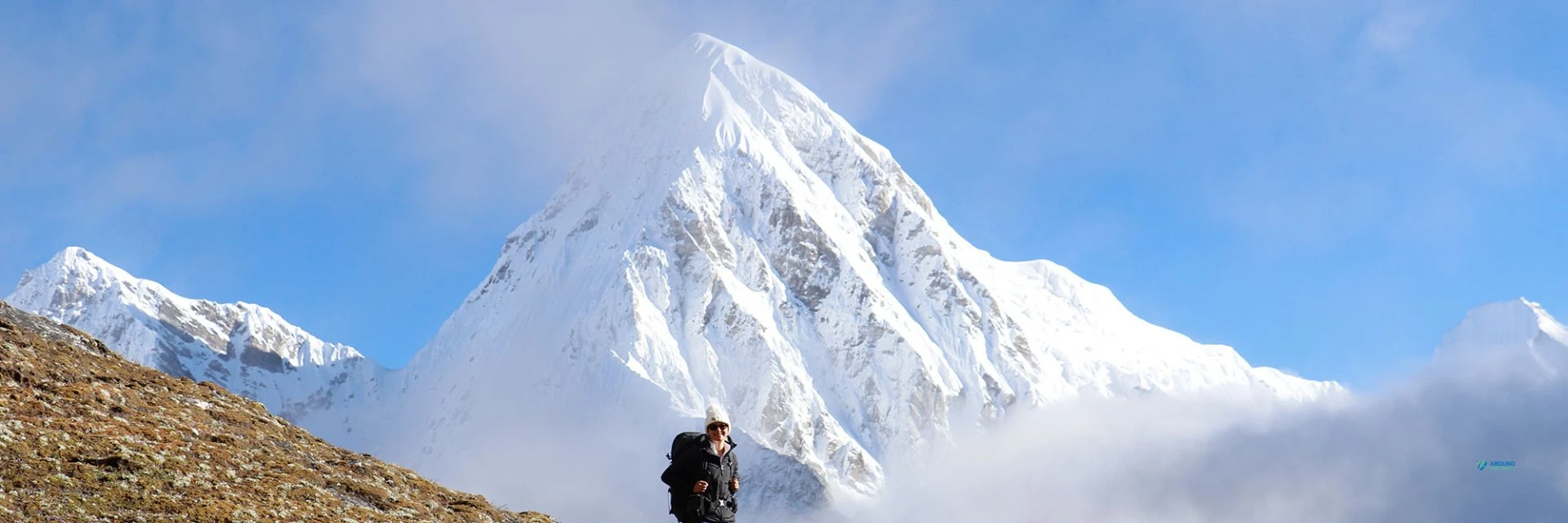
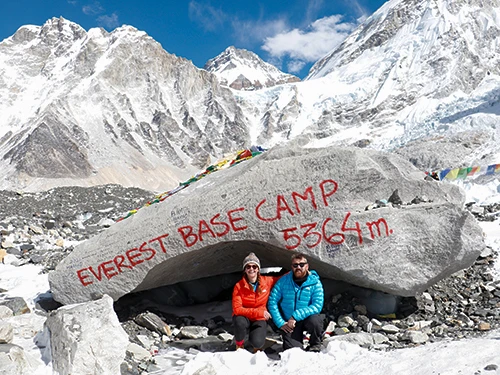
 based on 5 reviews
based on 5 reviews
